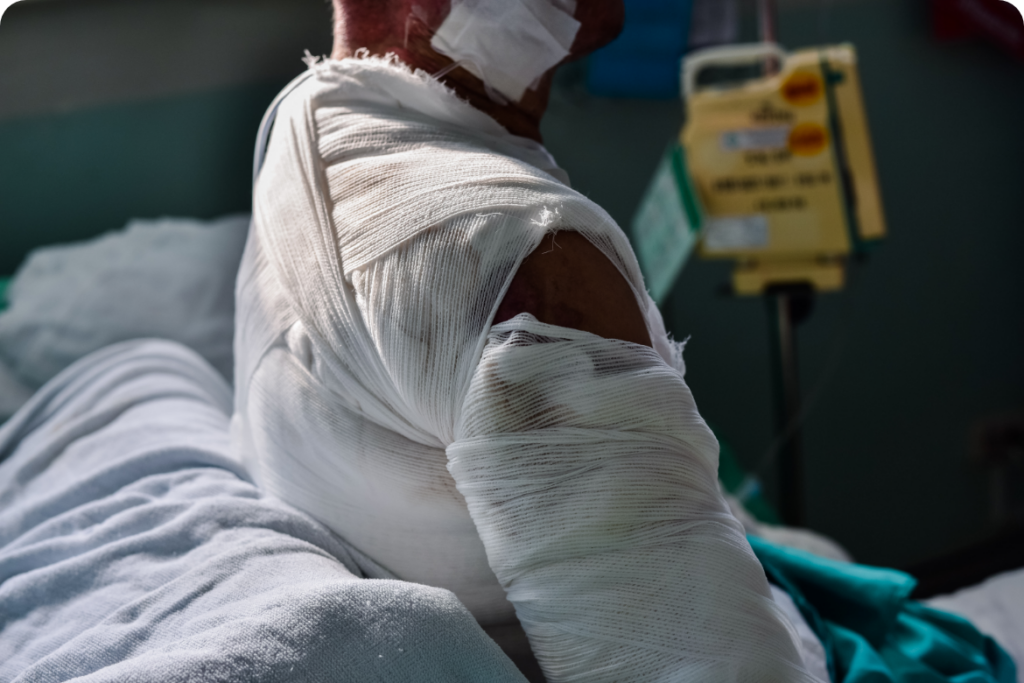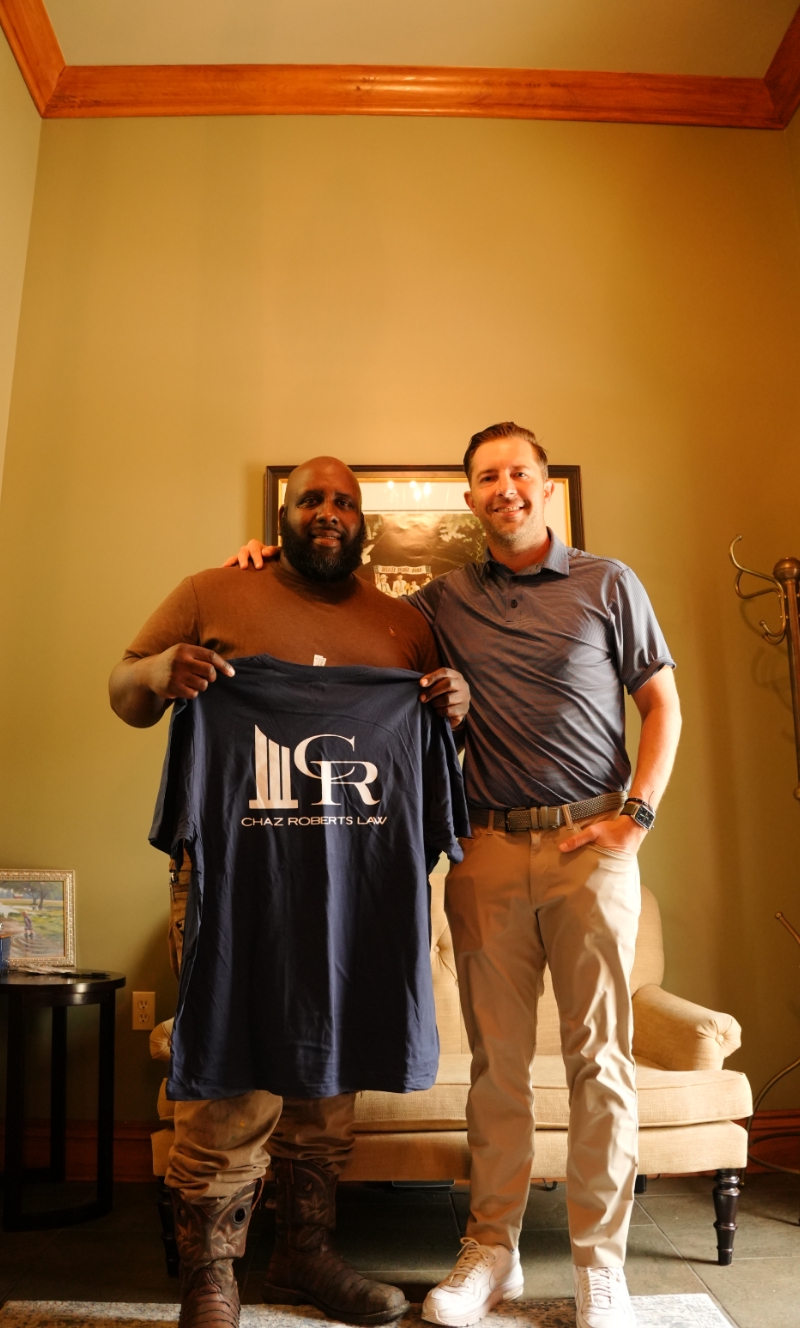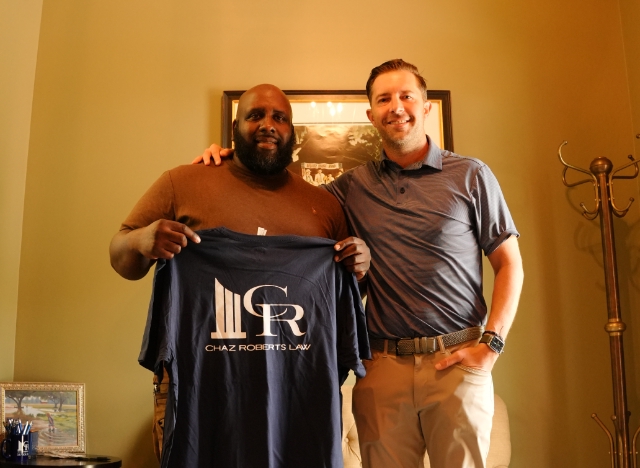Catastrophic injuries are not just severe; they are life-changing. These types of injuries often require extensive medical treatment, long-term care, and can lead to permanent disability. If you or a loved one has experienced a catastrophic injury due to someone else’s negligence, you need an attorney who understands the complexities of these cases and can fight for your rights.
At Chaz Roberts Law, we understand the devastating impact that catastrophic accidents can have on victims and their families. Our dedicated team in Lafayette, LA, is committed to helping those who have suffered life-altering injuries secure the justice and compensation they deserve.
Types of Catastrophic Injuries
Catastrophic injuries are those that have a profound and lasting impact on a person’s life. They often result in permanent disability or significant impairment. Here are some examples of catastrophic injuries.
Traumatic Brain Injuries (TBI)
Traumatic Brain Injuries (TBI) are among the most serious and life-altering types of injuries that can occur in catastrophic accidents. TBIs result from a sudden impact to the head, such as from a fall, car accident, or being struck by an object, causing the brain to move rapidly within the skull or even leading to penetrating injuries where an object pierces the skull and brain tissue. The consequences of a TBI can be devastating and multifaceted, affecting every aspect of a person’s life.
TBIs are categorized into three levels of severity: mild, moderate, and severe. Even a mild TBI, often referred to as a concussion, can cause symptoms like headaches, dizziness, confusion, memory loss, and mood changes. Moderate to severe TBIs can result in more profound cognitive impairments, such as difficulties with attention, memory, language, and reasoning. Physically, victims may experience chronic headaches, seizures, impaired motor skills, or loss of coordination. Emotionally, TBIs can lead to depression, anxiety, personality changes, and difficulty controlling impulses. In severe cases, TBIs can result in permanent disability, requiring long-term care, rehabilitation, and assistance with daily living activities.
Paralysis
Paralysis refers to the complete or partial loss of muscle function in one or more parts of the body, often accompanied by a loss of sensation. This debilitating condition occurs when the nerve signals between the brain and muscles are disrupted, typically due to spinal cord injuries, traumatic brain injuries, or severe nerve damage. The extent and location of paralysis depend on the specific area of the nervous system affected.
Paralysis can be classified into different types, including:
- Quadriplegia/Tetraplegia: Paralysis that affects all four limbs and the torso, typically resulting from an injury to the cervical (neck) spinal cord.
- Paraplegia: Paralysis affecting the lower half of the body, including both legs, often resulting from an injury to the thoracic or lumbar regions of the spinal cord.
- Hemiplegia: Paralysis affecting only one side of the body, which can result from a brain injury, such as a stroke.
The impact of paralysis extends beyond the physical limitations, as it can lead to secondary complications like pressure sores, respiratory issues, and urinary tract infections. Victims often require assistive devices like wheelchairs, home modifications, and ongoing medical care, and they may face significant psychological challenges, including depression and anxiety.
Spinal Cord Injuries
Spinal cord injuries (SCI) are catastrophic events that disrupt the normal communication between the brain and the rest of the body. The spinal cord is a critical part of the central nervous system, running from the base of the brain down through the vertebral column. It carries messages from the brain to the body and vice versa, enabling movement, sensation, and control of bodily functions.
When the spinal cord is damaged, either through direct trauma or compression from fractured vertebrae, the results can be devastating. The location of the injury on the spinal cord determines the extent of the damage. Injuries higher up on the spinal cord typically result in more severe outcomes, such as quadriplegia, where the victim loses movement and sensation in all four limbs. Lower spinal cord injuries might result in paraplegia, where only the lower limbs are affected.
Beyond the loss of mobility, spinal cord injury victims often face chronic pain, loss of bowel and bladder control, respiratory difficulties, and a heightened risk of secondary conditions like infections and pressure sores. Recovery and rehabilitation are long-term processes, often involving physical therapy, occupational therapy, and potentially, the need for surgical interventions.
Severe Burn Injuries
Severe burn injuries are among the most excruciating and complex types of injuries, often involving extensive damage to the skin and underlying tissues. Burns can occur from exposure to heat, chemicals, electricity, or radiation, and are classified into degrees based on the depth and severity of the damage.
- First-degree burns affect only the outer layer of the skin (epidermis), causing redness and pain but usually healing without scarring.
- Second-degree burns extend into the second layer of skin (dermis), leading to blisters, severe pain, and potential scarring.
- Third-degree burns destroy both the epidermis and dermis, and can extend into deeper tissues, causing white or charred skin, numbness (due to nerve damage), and significant scarring.
Severe burns, typically second-degree or higher, often require immediate medical intervention, including wound care, pain management, and possibly surgery. For third-degree burns, skin grafts may be necessary to replace the damaged skin. Victims often face a long and painful recovery process, which can include multiple surgeries, physical therapy, and rehabilitation to restore mobility and function. Additionally, severe burns can lead to psychological trauma, including post-traumatic stress disorder (PTSD) and body image issues, necessitating ongoing mental health support.
Amputations
Amputations involve the surgical removal of a limb or extremity, often as a result of traumatic injury, severe infection, or in some cases, a medical condition that compromises blood flow (such as diabetes). Traumatic amputations occur in high-impact accidents, such as car crashes, workplace incidents, or exposure to machinery, where the force of the accident directly causes the loss of a limb.
The impact of an amputation goes beyond the physical loss of the limb. Victims often experience "phantom limb" pain, where they feel sensations in the limb that is no longer there, which can be distressing and difficult to manage. The loss of a limb also significantly affects mobility, independence, and the ability to perform daily tasks. Prosthetic limbs can help restore some functionality, but they require fitting, physical therapy, and adaptation, and may not fully replicate the lost limb's capabilities.
Emotionally, the loss of a limb can be devastating, leading to challenges with self-esteem, body image, and mental health. Victims may need psychological support to cope with the changes in their lives and to adapt to their new circumstances.
Multiple Fractures
Multiple fractures refer to the breaking of several bones at once, or complex fractures where a bone is broken in multiple places. These injuries are often the result of high-impact trauma, such as car accidents, falls from a significant height, or direct blows during physical activities.
Multiple fractures can be particularly challenging to treat, as they often involve significant damage to surrounding tissues, blood vessels, and nerves. Depending on the severity, treatment may involve surgical intervention to realign and stabilize the bones using plates, screws, or rods. Recovery typically requires immobilization (such as casting or bracing) followed by extensive physical therapy to restore movement and strength.
The rehabilitation process can be long and arduous, with the potential for complications such as improper healing (malunion), infection, or chronic pain. Victims may also face limitations in mobility and function, affecting their ability to work and carry out daily activities, and may require long-term support and accommodations.
Internal Organ Damage
Internal organ damage refers to injuries to the body’s vital organs, such as the heart, lungs, liver, kidneys, or spleen, often resulting from blunt force trauma, penetrating injuries, or severe pressure. Such injuries can be life-threatening and require immediate medical attention.
Internal organ damage may not always be immediately apparent, making it particularly dangerous. Symptoms can include severe pain, internal bleeding, and signs of shock, such as rapid heartbeat, low blood pressure, and confusion. Depending on the organ affected, the consequences can vary widely:
- Liver Damage: Can lead to internal bleeding, jaundice, and severe abdominal pain.
- Kidney Damage: May cause blood in the urine, back pain, and in severe cases, kidney failure.
- Lung Damage: Can result in difficulty breathing, collapsed lung (pneumothorax), or respiratory failure.
- Heart Damage: May cause chest pain, arrhythmias, or, in extreme cases, heart failure.
Treatment for internal organ damage often involves surgery to repair the damage and stop any internal bleeding. Recovery can be prolonged and may require ongoing medical care, including monitoring for complications, medication, and possibly further surgeries. Long-term effects can include chronic pain, reduced organ function, and a diminished quality of life.
Common Scenarios That Lead To Catastrophic Accidents
Catastrophic injuries can occur in various situations, often due to the negligence or recklessness of others.While it is impossible to entirely eliminate teh risk of injury in your everyday life, understanding how most catastrophic injuries occur, can help you make informed decisions to avoid accidents. Some of the most common scenarios include:
- Car and Truck Accidents: High-impact collisions, especially those involving large trucks, can result in devastating injuries.
- Medical Malpractice: Errors during surgery, misdiagnosis, or improper treatment can lead to catastrophic outcomes.
- Premises Liability: Unsafe conditions on someone else’s property, such as slip and falls or falling objects, can cause severe injuries.
- Workplace Accidents: Accidents in construction sites, factories, or other high-risk environments can result in catastrophic injuries.
- Product Liability: Defective products, such as faulty machinery or dangerous drugs, can lead to life-altering injuries.
Understanding the cause of your accident is also crucial in holding the responsible parties accountable.
Potential Damages To Recover in Your Case
Victims of catastrophic accidents are often entitled to recover significant damages. Depending on the severity of your injuries and the circumstances of the accident, you may be entitled to recover damages for:
- Medical Expenses: Compensation for both current and future medical costs, including surgeries, rehabilitation, and long-term care.
- Lost Wages: Reimbursement for income lost due to your inability to work, as well as compensation for diminished earning capacity.
- Pain and Suffering: Compensation for the physical pain and emotional distress caused by your injuries.
- Loss of Enjoyment of Life: Damages for the impact your injuries have on your ability to enjoy daily activities and hobbies.
- Wrongful Death: If a catastrophic accident results in death, the family may be entitled to damages for funeral expenses, loss of companionship, and more.
It’s also important to understand Louisiana’s comparative negligence law. In Louisiana, if you are found partially at fault for the accident, your compensation may be reduced by the percentage of your fault. This makes it even more crucial to have an experienced attorney on your side to minimize any fault attributed to you.
How Can A Personal Injury Attorney Help You in Your Catastrophic Injury Case?
When you or a loved one suffers a catastrophic injury, the aftermath can be overwhelming. The physical pain, emotional distress, and financial burdens can make it difficult to know where to turn. Navigating the legal system in such cases is complex, requiring not only an understanding of the law but also the medical intricacies involved in severe injuries. This is where the expertise of an experienced attorney becomes invaluable.
At Chaz Roberts Law, we understand that every catastrophic injury case is unique and demands a tailored approach. Our team is committed to providing comprehensive legal support to ensure that you receive the justice and compensation you deserve. From the moment you entrust us with your case, we take on the burden of dealing with the legal aspects so that you can focus on your recovery.
Contact Chaz Roberts Law Today To Discuss Your Case
If you or a loved one has suffered a catastrophic injury, don’t navigate the legal process alone. The experienced attorneys at Chaz Roberts Law are here to help you secure the compensation you need to rebuild your life. Contact us today at (337) 504-3202 for a free consultation.



